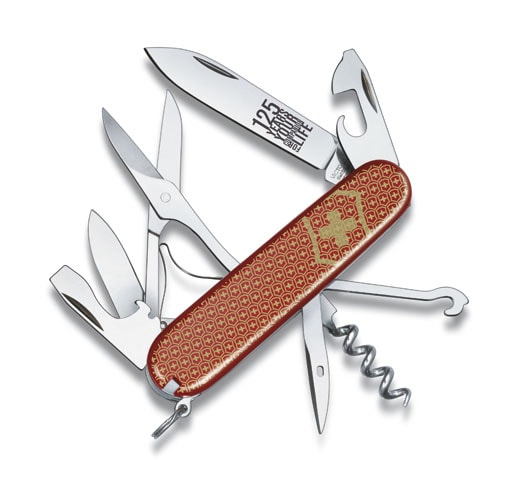
Blades of Glory
From Switzerland to Colaba, the Swiss Army Knife has come a long way
Open a beer bottle. File your nails. Even tighten a screw. The Swiss Army Knife, born 125 years ago from one man’s nationalism, has since been widely used by armed forces, boy scouts and the common man alike. Celebrated for its ability to function in a hundred different situations, a single knife tool soon evolved to include a screwdriver, magnifying glass, and some ten other tools. Today, one avatar includes an MP3 player, USB flash drive, digital altimeter, LED light, and digital clock.
That’s a far cry from where the knife started. Before World War I, a lowly surgical equipment maker in Switzerland, Karl Elsener, found out that the Swiss army’s pocket knives were made in Germany. Elsener’s patriotism was offended and he decided to manufacture his own from Switzerland. He chucked out many of his original models until he found a spring mechanism — the pivot point — which allowed double the tools to fit inside that just nine centimetre-long red handle. The first knife had a wooden handle, large blade, screwdriver, can opener, and reamer. The Swiss armed forces loved it.
When Elsener’s mother Victoria died two decades later, he decided to name the company that soon manufactured not just knives but also travel gear, cutlery, and watches, after her. And because the knives were made of stainless steel, or ‘inox’, the company was aptly christened: Victorinox. The knife itself originally had a name that was much harder to pronounce — Schweizer Offizier Messer. US soldiers couldn’t say it, and simplified its name to just the Swiss Army Knife.
When World War II rolled around, the knife became a turncoat. Elsener found himself with surplus products, and so he began exporting the knives back to Germany, so Anish Goel, head of Victorinox India, tells the tale. The Allied soldiers bought them as well, and when the war ended, brought the knives home en masse. And thus the Swiss Army Knife went from the battlefield to people’s homes, says Goel.
But in India, the story starts much later. Although the knife occasionally made it here from trips abroad, Swiss Army Knives began selling in India only in 1995. “It started in this office with two lakh and one steel almirah,” says Goel from his now-swank office in Mumbai.
Since the knife’s entrance into the country in 1995, many consumers like Raj Pai, head of the Green Energy Fund in India, bought them up eagerly. “Every adventurous guy is introduced to the Swiss Army Knife, for reasons of utility,” he says. India now has four Basecamp stores — Victorinox’s travel store. The knives are also sold through 40 other outlets within departmental stores, etc. You can buy one for anything from Rs. 450 (nine functions) to Rs. 8640 (50 functions).
But Anil Chandhok, CEO of Chenab Apex, importer of food products, laments that while he can still use the knife to open cans of food or a bottle of wine, he can no longer travel with it on his keychain, because of security checks at the airport and other places. He can carry it only in checked baggage.
The Sikhs get off a bit easier. On some airlines, Sikhs can carry kirpans in carry-on baggage, including the special Swiss Army Knife kirpan designed by Goel for the Sikh community in 2004. The Indian army got a special knife, too, which they use in certain combat areas.
But the biggest consumer of the Swiss Army Knife will probably always be the aam aadmi, who might be a traveller or an adventurer. “It’s domestic, but it’s also wild, and most of all it is utilitarian,” says Pai. And today, less than a kilometre from Goel’s office, copycat knives line the streets of Colaba Causeway. At least the models aren’t German, or Elsener would be turning in his grave.
(This story appears in the 30 November, -0001 issue of Forbes India. To visit our Archives, click here.)





